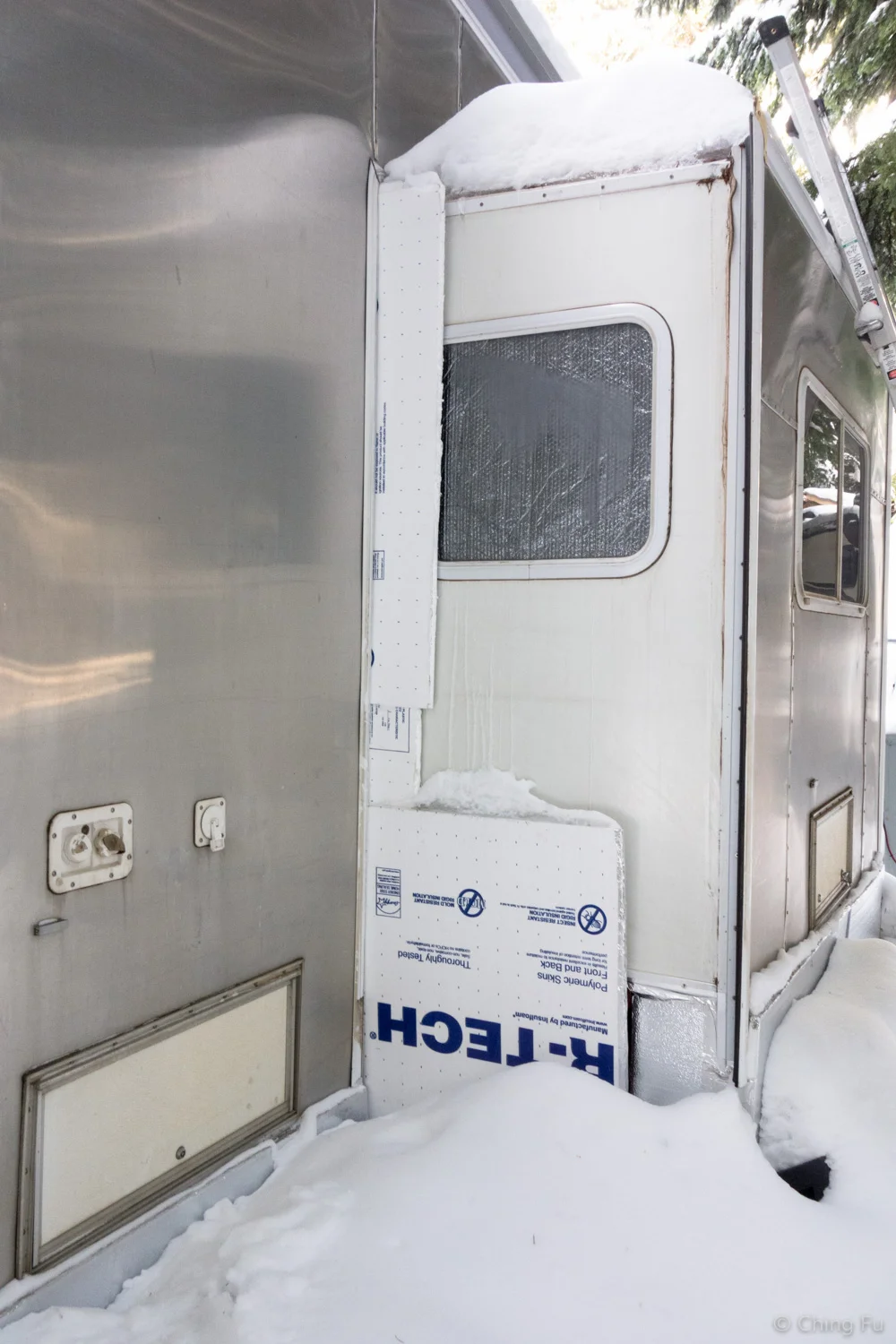Skirting The Toaster For Winter
Disclosure: This post contains Amazon affiliate links. As an Amazon Associate we earn a small commission at no additional cost to you. Please read our disclaimer.
When we decided to spend the winter season in the snowy mountains of Washington, we were a little bit hesitant. RVs and freezing weather doesn’t exactly go hand in hand. But with the right preparations it can be a successful and enjoyable experience.
Where we're staying for the winter, pre-snow.
So what does “skirting” an RV mean? Pretty much exactly what it sounds like – putting material around the bottom of the rig to keep its nether regions protected from the cold. Skirting your RV is one of the most important things to do if you’re staying somewhere that gets below freezing (don’t forget wind chill) for long periods of time. Especially if your rig doesn’t come with a winterized set up that includes a covered and sometimes heated underbelly, heated tanks, etc. We don’t have any of that fancy stuff in the Toaster, so in our case not skirting the Toaster means frozen tanks, frozen dump valve, and frozen pipes. All really bad things. But we do have a couple of heat trace mods on the dump valve and the drain line. Skirting an RV also keeps it warmer inside the rig, which means you don’t have to run the heater as much.
While you can skirt an RV with any material you want, these are the popular ones with RVers:
Vinyl material that snaps around the RV
Plywood
Thick plastic sheet
Styrofoam boards
Snow
We chose 1-inch thick R-Tech, which is a foil faced Styrofoam board, and then piled snow on top of that. The snow actually increases the underbelly temperatures by several degrees (it plugs in any gaps). We also purchased a 500-watt halogen work light to use under the rig when temperatures drop below 20 degrees. The light has been effective in keeping our under carriage from freezing into single digit temperatures.
We also lucked out and had enough leftover cut pieces of R-Tech (and in the right lengths) to plug directly into the gap around the outside of the slide.
Even though we despise Styrofoam, it’s the best solution and offers the best insulation. Styrofoam boards are a lot easier to manage and work with than plywood. You don’t need a saw to cut the Styrofoam, just a knife. And only tape is necessary to attach the boards to an RV. It’s also cheaper than plywood. Vinyl material is a better choice than Styrofoam mainly because it’s reusable. But it’s expensive, heavy, and it takes up valuable space that we don’t have, especially if we don’t plan to frequently winter somewhere freezing cold. Our friends Mary and Barbara actually gave us their old vinyl RV skirt. We were thrilled to receive it, but because of its weight (I swear it weighs 100 lbs) and its bulk, we couldn’t bring it with us.
Our hope is that we can give our Styrofoam boards to our friend’s dad who owns a winery. He may be able to reuse it to insulate his wine barrels. If that doesn’t work out, the second best option is to recycle it. Although Styrofoam is typically difficult to recycle, we found a place in Kent, WA that can handle it.
We skirted the Toaster shortly after we moved up to Crystal Mountain, before the first freeze and snowfall was forecasted.
We made a video of the process. Take a look.
Skirting an RV isn't very hard and doesn't require a lot materials and tools. Here's what we used:
Knife
Shovel
Long straight edge
Sharpie
Blow dryer (weather dependent)
Umbrella (weather dependent)
THANK YOU FOR MAKING YOUR AMAZON PURCHASES THROUGH OUR AFFILIATE LINK.
Related Posts







